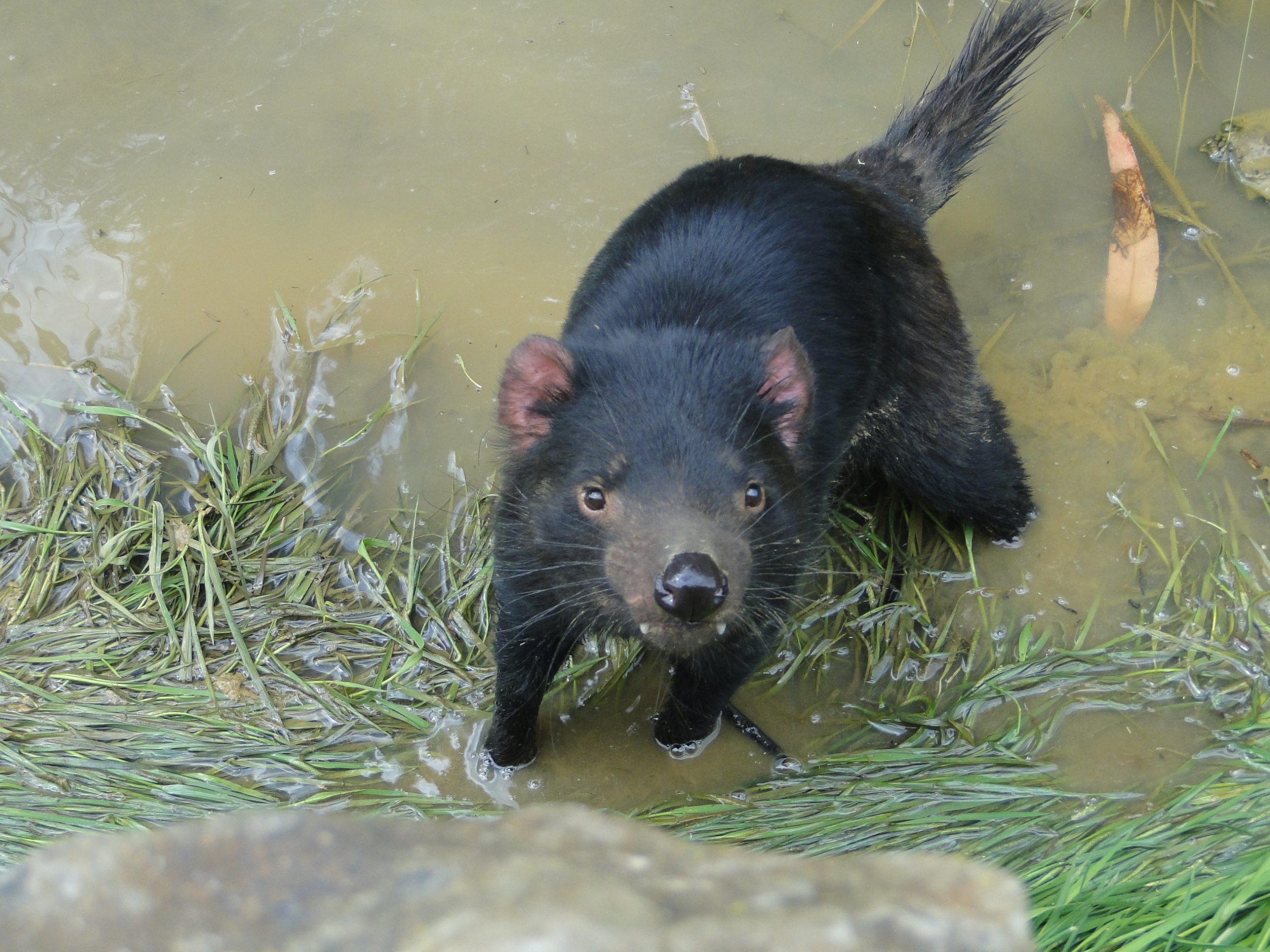
Maximilian Stammnitz is first author of a Science paper on the mutations in Tasmanian devils which lead to transmissible cancers.
DFT2 is still not widespread in the devil population, and very little is known about it. We were really startled to see just how quickly it was mutating, alerting us to what could be a very unpredictable threat to the devils in the long term.
Maximilian Stammnitz
Scientists, including Gates Cambridge Scholar Maximilian Stammnitz [2016], have traced the family trees of two transmissible cancers that affect Tasmanian devils and have pinpointed mutations which may drive growth of deadly diseases.
Transmissible cancers, which occur only rarely in the animal kingdom, are spread by the transfer of living cancer cells. In the case of Tasmanian devils, the cells are transferred through biting – a behaviour that is common in devils especially in fights over mates and food.
Tasmanian devils are susceptible to two fatal transmissible cancers called devil facial tumour 1 (DFT1) and devil facial tumour 2 (DFT2) that have caused rapid population decline in recent decades. The two cancers both manifest with disfiguring facial tumours.
In a new study, University of Cambridge researchers mapped the emergence and mutations of DFT1 and DFT2 and characterised these cancers’ ongoing evolution. The findings underline the continued threat that transmissible cancers pose to Tasmanian devils.
The results are published today in the journal Science.
“The incredible fact that Tasmanian devils have not one, but two, transmissible cancers, makes it possible to compare their evolution, and this gives us new insights into the key mechanisms involved,” said lead author Elizabeth Murchison, Professor of Comparative Oncology and Genetics at the Department of Veterinary Medicine, University of Cambridge.
“By looking at the mutations that have accumulated in these cancers’ DNA, we can trace the origins and evolution of these diseases. Our results show that the two cancers arose through similar processes and that both have striking signals of ongoing evolution. It is difficult to predict how this continued cancer evolution will impact devils.”
The researchers created an improved ‘reference genome’ – essentially a map of the entire DNA sequence – of the Tasmanian devil and compared this to DNA taken from 119 DFT1 and DFT2 tumours. DFT1 was first observed in 1996 in Tasmania’s northeast and is now widespread throughout Tasmania. DFT2, on the other hand, was first observed in 2014 and remains confined to a small area in Tasmania’s southeast. The scientists identified mutations in the tumours and used these to build ‘family trees’ of how the two cancers had each independently arisen and evolved over time.
By tracking mutations the researchers discovered that DFT2 acquired mutations about three times faster than DFT1. As mutations usually occur during cell division, the most likely explanation is that DFT2 is a faster growing cancer than DFT1, say the researchers, underlining the importance of DFT2 as a threat.
“DFT2 is still not widespread in the devil population, and very little is known about it. We were really startled to see just how quickly it was mutating, alerting us to what could be a very unpredictable threat to the devils in the long term,” said Maximilian Stammnitz, first author of the study.
The team found that DFT1 arose in the 1980s, up to 14 years before it was first observed, whereas DFT2 emerged between 2009 and 2012, only shortly before it was detected.
Mapping the mutations revealed that DFT1 underwent an explosive transmission event shortly after it emerged. This involved a single infected devil transmitting its tumour to at least six recipient devils.
DFT1 has now spread throughout almost the entire devil population and has recently been reported in the far northwest of Tasmania, one of the few remaining disease-free regions of the state.
Researchers also identified for the first time an instance of DFT1 transmission between a mother and the young in her pouch. Additionally, they found that the incubation period – the time between infection and the emergence of symptoms – can in some cases be a year or more. These findings have important implications for conservation scientists working to protect the species.
“I come from Tasmania and love Tasmanian devils – they have a special place in my heart,” said Murchison. “Transmissible cancers pose an unprecedented and unpredictable threat to Tasmanian devils. This research highlights the continuing importance of monitoring and conservation programmes. It also gives us new insights into the evolutionary mechanisms operating in cancer more broadly, including in human cancers.”
*The research was funded by Wellcome, the Gates Cambridge Trust and Eric Guiler Tasmanian Devil Research Grants from the University of Tasmania Foundation. Picture credit: Wiki Commons.












